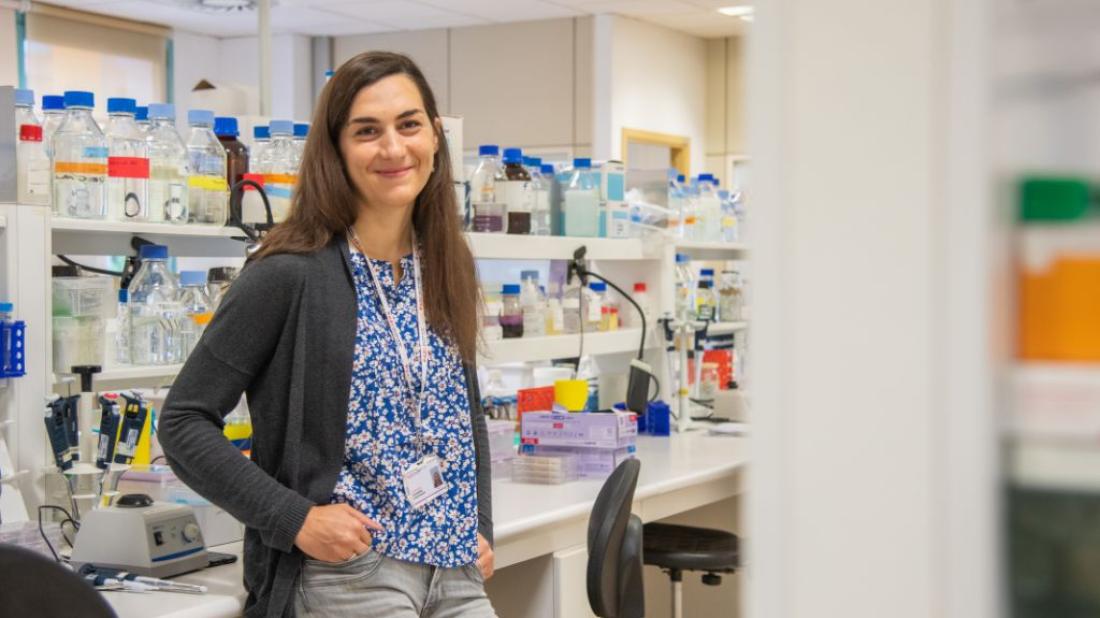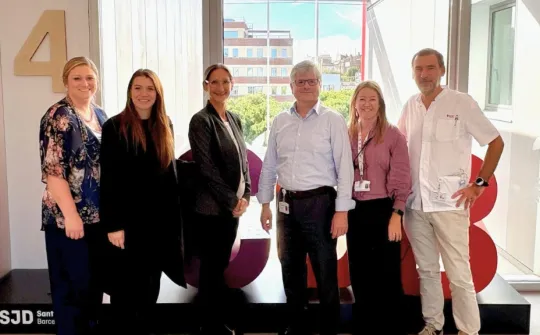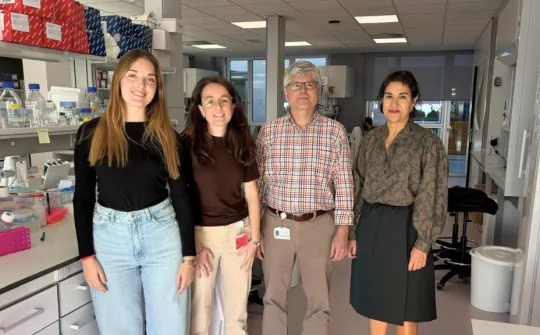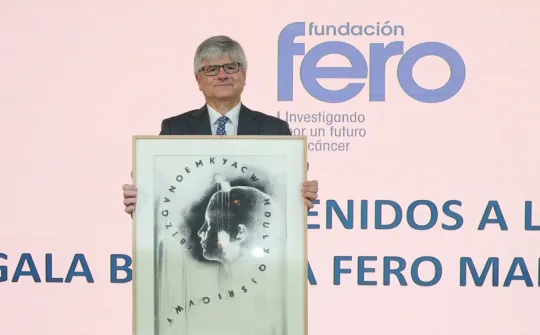
Researcher Alexandra Avgustinova and her team are trying to determine the repercussions of the mutation responsible for these tumours and how it gives rise to this paediatric cancer.
During the first weeks of gestation, embryonic cells that have not yet completed the differentiation process that gives rise to the formation of tissues and organs experience a loss of the protein encoded by the SMARCB1 gene. That is the starting point and the beginning of a rhabdoid tumour, a most rare and aggressive childhood cancer that manifests in some very young children.
For three years, the Pediatric Cancer Epigenetics research group of SJD Barcelona Children's Hospital - IRSJD, has endeavoured to discover what the repercussions of this mutation are and how they give rise to the tumour. The ultimate goal is finding a treatment in the future that will increase the survival rate of children with this childhood cancer.
The group aims to understand when and how the first tumour cell forms and survives. Compared to other research teams, it is a unique approach that focuses on studying how mutations affect cell functions when the tumour has already developed. To boost this line of research, the head of the group, Alexandra Avgustinova, has received an excellence grant from the European Research Council (ERC) for an amount of 1.5 million euros.
How does the SMARCB1 gene intervene in the occurrence of rhabdoid tumour?
The loss of the SMARCB1 gene only triggers a rhabdoid tumour if it occurs at a specific time in embryonic development. If it manifests at any other time during pregnancy or during adulthood, it does not have the same tumorigenic effect. It only has that effect in a very specific environment. If we can find out when, how and why it occurs in that environment, we may be able to modify it with highly targeted therapy. We don’t know exactly how yet, but we’re working to find out.
The initial projects of the Paediatric Cancer Epigenetics group focused on rhabdoid tumours. Why?
There are several reasons. We were able to start this line of research thanks to the donation made by the family of a patient affected by this disease.
But rhabdoid tumours also have some characteristics that make them unique. They have a very low mutation rate, which allows us to clearly see which one is responsible for the tumour: the loss of SMARCB1, and the epigenomic reprogramming associated with that loss.
They are also very rare and aggressive tumours with a five-year survival rate of 20%. They affect very young boys and girls, and we know hardly anything about them. There is a lot to discover about this disease.
If they are so rare, one of the great challenges will be to obtain a representative sample for research.
Yes. That is one of the greatest difficulties we encounter. I am always very grateful to families who allow us to use samples of their child’s tumour because that is what allows us to better understand childhood cancer. Thanks to these samples, we can carry out a molecular characterisation of the tumours, and so far we have been able to develop eight PDX models of rhabdoid tumours, meaning we have been able to replicate the patient’s tumour in animals and six cell cultures. It is an important number for a disease as rare as this one.
And now, what are the next steps?
We are now trying to reverse the mutation, the loss of SMARCB1. We believe that if this is the only mutation that causes the tumour, and we manage to reverse it, we will be able to stop the process.
In cell cultures, we have seen that when we reverse the mutation, the tumour cells no longer proliferate when the gene SMARCB1 is expressed again. Now, we want to see if the same thing happens in animal models. We have just been awarded a FERO grant of 80,000 euros to carry out this research. If our hypothesis is confirmed, in the future, we may be able to design personalised therapies aimed precisely at reversing the mutation and preventing tumour development.
Could the results of these investigations be extendable to other paediatric tumours?
It’s difficult because each cancer is different. What we can extend to research on other tumours is the conceptual framework of what we are doing, our way of modelling, our way of thinking. In fact, we are already exploring similar studies in osteosarcoma and Ewing sarcoma.



